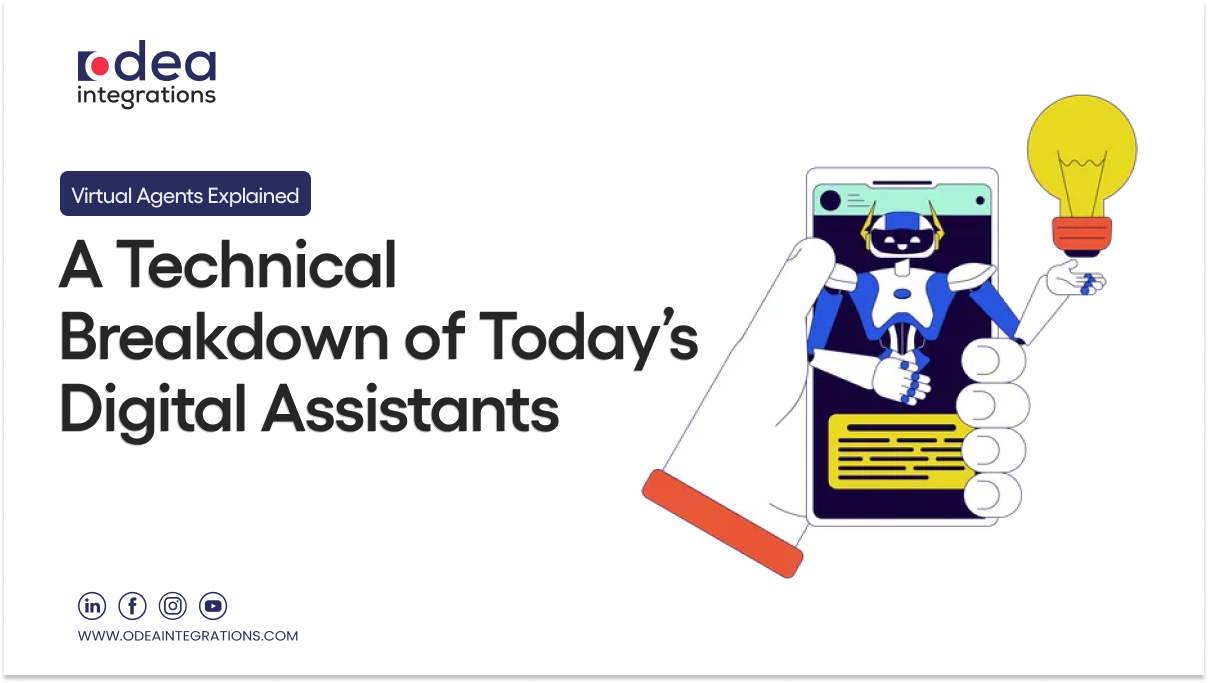Imagine calling a customer support center and, within seconds, receiving answers to complex questions without waiting for a human representative. This is the power of virtual agents, a technology that’s rapidly transforming customer service by offering round-the-clock assistance and improving user experiences across countless industries. But how do these digital assistants work behind the scenes? Let’s explore the key technical components that bring these virtual agents to life, highlighting each stage of the process that makes their human-like interactions possible.
1. Audio Intake: The Starting Point
It all begins when a user speaks to the virtual agent. This voice input might come from a smartphone, computer, or even a smart speaker. Each device captures raw audio data, which becomes the initial fuel for the virtual agent to work with.
Before diving deeper, this audio is cleaned up through preprocessing filters that remove background noise and enhance clarity. The goal is to make the voice data as clear as possible, setting the stage for accurate interpretation.
2. Speech-to-Text Processing: Converting Voice into Words
Once the audio is captured, the next critical step is transforming it into text using Speech-to-Text (STT) technology. Here, machine learning models recognize various language patterns, accents, and even slang to transcribe spoken words with high accuracy.
For instance, if a customer says, “What’s my order status?” the STT model captures this sentence precisely so the system can respond appropriately. Cutting-edge STT systems use deep learning and huge data libraries to ensure accuracy and speed. Some STT tools can even be customized to understand industry-specific language, adding an extra layer of precision. Think of a banking virtual agent that recognizes financial terms, making it more helpful for its users.
3. Natural Language Processing (NLP): Understanding User Intent
With the user’s words now in text form, the process moves to Natural Language Processing (NLP)—the stage where true “understanding” happens. NLP breaks down, interprets, and analyzes the language to capture the user’s intent, context, and meaning. This involves several steps:
- Intent Recognition: Detecting the user’s goal, like asking a question, giving a command, or requesting information.
- Entity Extraction: Pulling out key details—dates, locations, product names, etc.—that are relevant to the user’s request.
- Contextual Analysis: Maintaining continuity in multi-step conversations, so the agent doesn’t lose track of what’s been discussed.
Large language models (LLMs) like GPT power this stage, enabling virtual agents to grasp specific terminology and even industry jargon. For example, a healthcare chatbot may be trained to recognize medical terms, making interactions feel smooth and intuitive for users.
4. Conversational Logic and Response Generation: Formulating the Reply
Now that the virtual agent understands the user’s intent, it needs to respond effectively. This involves two main parts:
- Decision-Making Algorithms: Algorithms decide how to reply based on the user’s request, past interactions, and the predefined logic set up by developers. The logic could involve simple if-then statements, rule-based flows, or even sophisticated decision trees powered by AI.
- Response Generation: The agent formulates a reply by either retrieving data from a database or constructing an answer using templates. Some advanced agents even build responses dynamically, creating more natural and nuanced replies.
For instance, if a user asks a retail virtual agent, “When will my package arrive?” the agent might pull real-time shipping information to provide an accurate response.
5. Text-to-Speech (TTS) Conversion: Making the Agent Sound Human
For voice interactions, the generated text response is converted back into speech using Text-to-Speech (TTS) technology. Modern TTS models are trained to sound increasingly human, capturing natural tones, pacing, and emphasis.
Today’s TTS advancements mean virtual agents can even be tailored to have unique personalities, accents, or tones, making the experience more engaging. Imagine a travel chatbot that uses a friendly, conversational tone or a legal assistant that speaks in a more formal, professional manner.
6. Real-Time Execution and Optimization: Responding in a Flash
For users, all these steps—from capturing audio to generating a response—happen within milliseconds. Low-latency cloud computing, efficient data pipelines, and streaming technologies work together to deliver responses almost instantly, providing a seamless experience.
With users expecting answers in less than a second, speed is essential. Innovations in neural processing and edge computing allow virtual agents to handle high volumes of interactions without delays, even during peak times.
Final Thoughts
Virtual agents are evolving at an incredible pace. Advancements in NLP, TTS, and AI-driven decision-making are making them smarter and more responsive. For businesses looking to enhance customer service and streamline operations, virtual agents are quickly becoming indispensable tools.
In the years to come, expect virtual agents to offer even more intuitive, emotionally aware responses, potentially transforming the way we interact with technology in every aspect of our lives.
For companies considering virtual agent technology, investing in customization options like NLP tuning for industry-specific language can greatly enhance user satisfaction.



